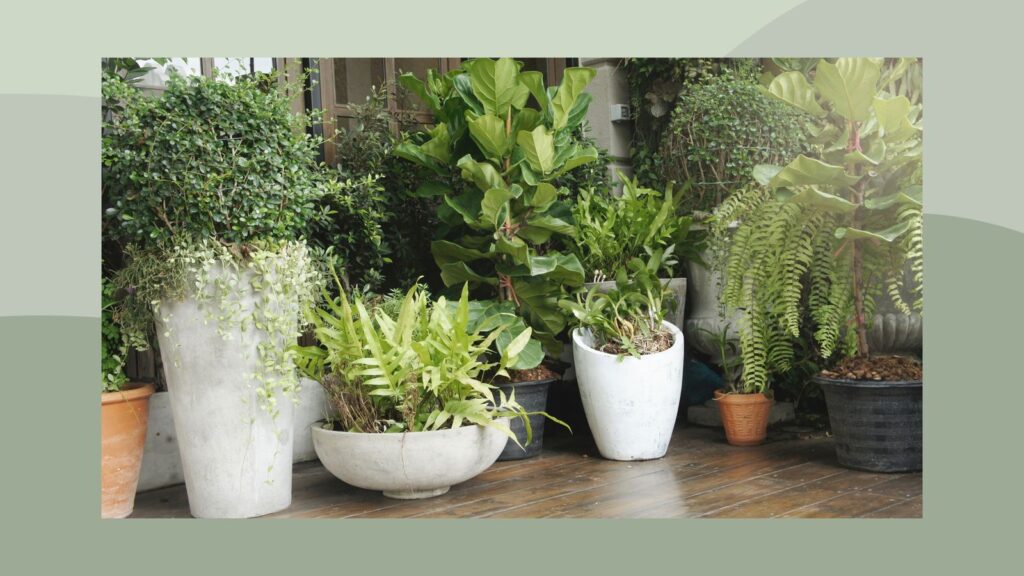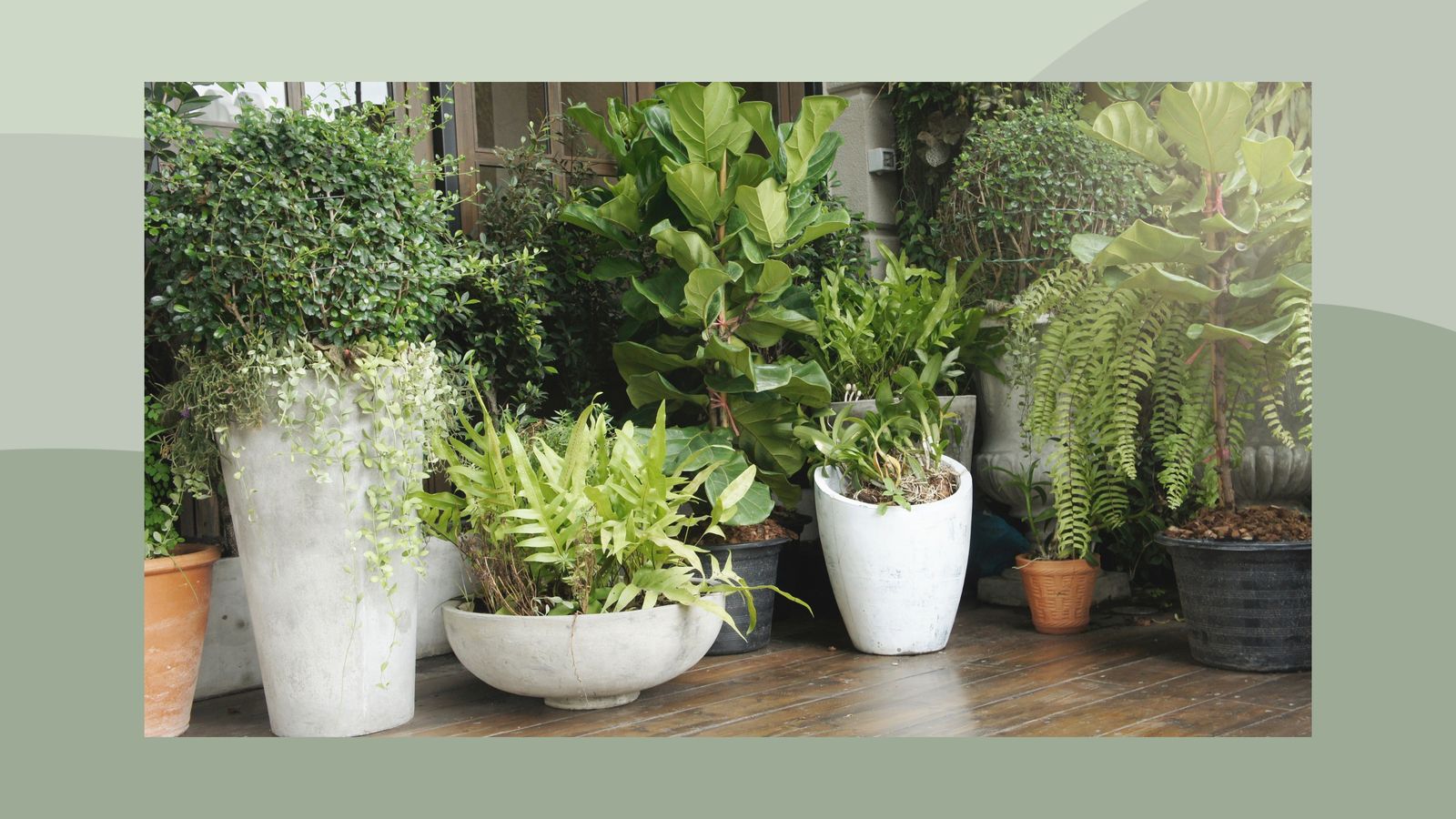
Elevate Your Outdoor Space: A Guide to Choosing the Best Potted Plants for Your Patio
Creating a welcoming and visually appealing patio involves more than just comfortable furniture; the right selection of potted plants for patio spaces can transform an ordinary area into a lush, inviting oasis. Whether you’re working with a sprawling deck or a small balcony, understanding which plants thrive in containers and complement your patio’s aesthetic is crucial. This comprehensive guide will walk you through the key considerations for selecting, arranging, and caring for potted plants for patio environments, ensuring your outdoor space remains vibrant and enjoyable throughout the seasons.
Understanding Your Patio’s Environment
Before diving into plant selection, assess your patio’s unique characteristics. Consider these factors:
- Sunlight Exposure: How many hours of direct sunlight does your patio receive daily? This will dictate whether you need sun-loving plants, shade-tolerant varieties, or something in between.
- Climate and Hardiness Zones: Understanding your local climate and USDA plant hardiness zone is essential for choosing plants that can withstand your region’s temperature extremes.
- Space Constraints: Evaluate the size of your patio and the available space for potted plants. Consider both floor space and vertical opportunities, such as hanging baskets or wall-mounted planters.
- Wind Exposure: Is your patio exposed to strong winds? If so, you’ll need to select plants that are sturdy and less prone to breakage.
Choosing the Right Containers
The container is just as important as the plant itself. Consider these factors when selecting pots:
- Material: Terracotta, ceramic, plastic, and wood are common options. Terracotta and ceramic are porous, allowing for better drainage, but can be heavy. Plastic is lightweight and affordable but may not be as aesthetically pleasing. Wood offers a natural look but requires maintenance.
- Size: Choose a pot that is appropriately sized for the plant’s root system. Too small, and the plant will become root-bound. Too large, and the soil may retain too much moisture.
- Drainage: Ensure the pot has adequate drainage holes to prevent waterlogging.
- Style: Select pots that complement your patio’s overall design aesthetic.
Top Potted Plant Choices for Patios
Here are some excellent potted plants for patio spaces, categorized by their characteristics:
Flowering Plants
- Geraniums (Pelargoniums): These classic patio plants are known for their vibrant colors and long blooming season. They thrive in full sun and well-drained soil.
- Petunias: Another popular choice, petunias come in a wide array of colors and patterns. They prefer full sun and regular watering.
- Begonias: Begonias offer a variety of textures and colors, and many varieties tolerate shade, making them ideal for patios with limited sunlight.
- Impatiens: These shade-loving plants provide a burst of color in areas that receive little direct sunlight.
- Hibiscus: For a tropical flair, consider hibiscus. They require full sun and regular watering to produce their stunning blooms.
- Lantana: These drought-tolerant plants attract butterflies and hummingbirds with their clusters of colorful flowers. They thrive in full sun.
Foliage Plants
- Hostas: These shade-loving plants offer a variety of leaf shapes, sizes, and colors, adding texture and interest to shady patios.
- Ferns: Ferns provide a lush, green backdrop and thrive in moist, shaded conditions.
- Coleus: Coleus are known for their vibrant, patterned leaves and come in a wide range of colors. They can tolerate both sun and shade, depending on the variety.
- Caladiums: These tropical plants feature large, colorful leaves and prefer shade and moist soil.
- Sweet Potato Vine: With its trailing habit and colorful foliage, sweet potato vine adds a dramatic touch to containers and hanging baskets.
Herbs and Vegetables
- Tomatoes: Many tomato varieties thrive in containers, providing fresh tomatoes right on your patio. They require full sun and regular watering.
- Peppers: Similar to tomatoes, peppers are easy to grow in pots and offer a variety of colors and flavors.
- Herbs (Basil, Mint, Rosemary, Thyme): Herbs are perfect for containers and add fragrance and flavor to your cooking. They generally prefer full sun and well-drained soil.
- Lettuce and Spinach: These leafy greens can be grown in containers and provide a continuous harvest.
Trees and Shrubs
- Dwarf Citrus Trees: These compact trees provide fragrant blossoms and delicious fruit. They require full sun and well-drained soil.
- Japanese Maple: These elegant trees add a touch of sophistication to patios with their graceful form and colorful foliage.
- Boxwood: Boxwood is a classic choice for formal patios and can be pruned into various shapes.
- Hydrangeas: These flowering shrubs offer large, showy blooms and prefer partial shade.
Arranging Your Potted Plants for Maximum Impact
The arrangement of your potted plants is crucial for creating a visually appealing patio. Consider these tips:
- Create a Focal Point: Use a larger, more striking plant as a focal point to draw the eye.
- Vary Heights and Textures: Combine plants of different heights, shapes, and textures to add visual interest.
- Group Plants with Similar Needs: Group plants with similar sunlight and watering requirements together to simplify care.
- Use the “Thriller, Filler, Spiller” Method: This classic container gardening technique involves using a tall, eye-catching plant (thriller), a mounding plant to fill in the space (filler), and a trailing plant to spill over the edges of the pot (spiller).
- Consider Color Harmony: Choose plants with colors that complement each other and your patio’s overall design.
Caring for Your Potted Patio Plants
Proper care is essential for keeping your potted plants healthy and thriving. Here are some key tips:
- Watering: Water regularly, especially during hot, dry weather. Check the soil moisture before watering and avoid overwatering.
- Fertilizing: Fertilize regularly with a balanced fertilizer to provide essential nutrients.
- Pruning: Prune regularly to remove dead or damaged foliage and to encourage bushier growth.
- Pest and Disease Control: Monitor your plants for pests and diseases and take action promptly if problems arise.
- Repotting: Repot plants as needed when they become root-bound or when the soil becomes depleted.
- Winter Protection: In colder climates, protect your potted plants from frost and freezing temperatures by moving them indoors or providing insulation.
Seasonal Considerations for Potted Plants
The best potted plants for patio may vary depending on the season. Consider these seasonal tips:
- Spring: Plant spring-blooming bulbs and annuals for a burst of color.
- Summer: Focus on heat-tolerant plants and provide regular watering.
- Fall: Add fall-blooming plants like mums and asters for late-season color.
- Winter: Protect sensitive plants from frost and consider adding evergreen foliage for winter interest.
Troubleshooting Common Problems
Even with proper care, you may encounter some common problems with your potted plants. Here are some tips for troubleshooting:
- Yellowing Leaves: This can be caused by overwatering, underwatering, nutrient deficiencies, or pests.
- Drooping Leaves: This is often a sign of underwatering or heat stress.
- Pests: Common pests include aphids, spider mites, and whiteflies. Treat infestations with insecticidal soap or neem oil.
- Diseases: Fungal diseases can be prevented by providing good air circulation and avoiding overwatering.
By carefully selecting and caring for your potted plants for patio use, you can create a beautiful and inviting outdoor space that you’ll enjoy for years to come. Remember to consider your patio’s environment, choose the right containers, and provide regular care to keep your plants healthy and thriving. Whether you opt for vibrant flowers, lush foliage, or fragrant herbs, potted plants are a perfect way to personalize your patio and create a relaxing oasis. Don’t be afraid to experiment with different combinations and styles to find what works best for you. With a little planning and effort, you can transform your patio into a green paradise. [See also: Container Gardening Ideas for Small Spaces]

